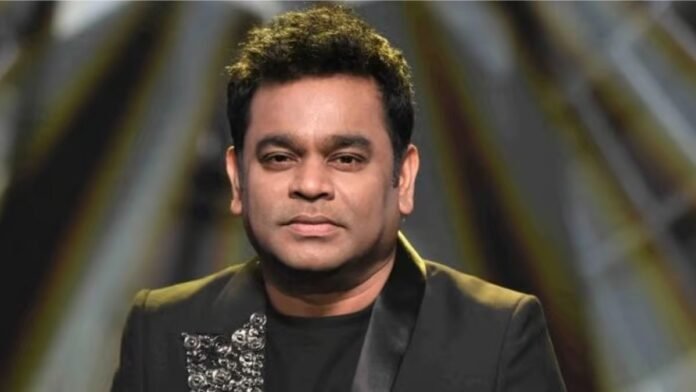RD Burman Composer Hemant Kumar was the, to begin with Indian to be welcomed to compose for a Hollywood film way back in 1972 You ought to have been named Hemant Kumar since you sing so well, the bad-tempered courageous woman of the night-long caper film Solva Saal (1958) snaps at the interloping legend after being unwarrantedly serenaded by him in a Bombay rural prepare whereas she is attempting to steal away with her lover. This was inconspicuous laud for the vocalist of ‘Hai apna dil to awara’, Hemant Kumar.
The tribute was well merited for the singer-composer for his ability to cross Bengali and Hindi movies and whose well-modulated baritone was the voice of geniuses of both businesses, particularly Uttam Kumar and Dev Anand. At that point, he got to begin with Indian welcomed to compose a Hollywood film – Conrad Rook’s Siddharta (1972), based on Herman Hesse’s novel, and utilized two of his Bengali melodies in it. Born on this day (June 16) in 1920 at that point Benares in a family of unassuming implies, Hemanta Mukhopadhyay was interested in music from his early a long time and surrendered his building instruction for music.
TRENDING NOW An uncommon combination of a skilled melodic composer, who wove in classical strains, and a playback vocalist, with a delicately alleviating voice, he recorded his begin with (Bengali) tune in 1940 and the to begin with Hindi tune a couple of a long time later. But, whereas well-established in Bengali movies in the 1940s, he seems not to make a concurrent check in Hindi movies.
It was as it were in the early 1950s that he was called to Bombay to deliver music for Anand Math (1952), and came to national unmistakable quality for both his energetic compositions and interpretations of ‘Vande Mataram’ and ‘Jai Jagdish Rabbit, Jai Jagdish Hare’ in it. His following two movies floundered, and a crippled Hemant Kumar, as he had ended up on the recommendation of experienced filmmaker Sasadhar Mukherjee, was arranging to head back to Calcutta but was persuaded to remain on. Nagin (1954), with its sleepily compelling music, particularly that snake-charmer song on a ‘been’ – rendered on the clavioline by Kalyanji and on the harmonium by Ravi – both his associates sometime recently they went to gotten to be conspicuous music chiefs in their possess right – cemented his put in the Hindi film industry and moreover gotten a Filmfare Grant for music.
But he went on to allow music – and his voice – for a few other point-of-interest movies, and too went on to change gothic scholarly showstoppers like Bees Saal Baad (1962), and Kohraa (1964), and that stark show Khamoshi (1969), his affect in Bombay begun declining in the late 1960s as his brand of music and his respectable voice did not draw in the consideration it once had. Be that as it may, he proceeded to appreciate a prospering career in Calcutta, particularly for his Rabindra Sangeet interpretations, separated from films. Hemant Kumar, who afterwards began to colour his hair as he fought that adolescents would not appreciate cherished tunes from a grey-haired man, too got to be known for denying a Padma Shri in the 1970s and a Padma Bhushan in the 1980s “as well late,” moderated down a bit in the 1980s due to wellbeing issues but went on.
He had returned from a concert in Dhaka in September 1989 sometime recently enduring a major and lethal heart attack. A top-notch music composer and a playback vocalist, like S. D. Burman, Hemant Kumar varied from the senior Burman, whose melodies were more situational, more prevalent and persevering songs. Take Yaad kiya dil ne kahan ho tum, picturised on a smart Dev Anand, in Patita (1953), or the rich ‘Main garibon ka dil hoon watan ki zabaan’, from Aab-e-Hayat (1955), which appears as another of the Middle eastern Nights-type adventure that were once Bollywood staples, the ethereal two part harmony ‘Nain se nain naahii milao’ in V. Shantaram’s ‘Jhanak Jhanak Paayal Baaje’ (1955), and the peppy and lively ‘Zara nazron se kah do ji nishana chuk na jaye’ (Bees Saal Baad) are proof. Then, his possess composed and sang ‘Na tum hamen jaano’ from Baat Ek Raat Ki (1962), where Dev Anand delicately warbles a piece of the ‘antara’, or maybe then the ‘mukhda’ over a resting Waheeda Rehman, sometime recently starting the song.
And there was his affinity for the telling stop and alter of tone – the about indiscernible break some time recently ‘Bichhad gaya har saathi dekar/Pal do buddy kaa saath/Kisko fursat hai jo thame deewaanon ka haath’.. and the slight alter of tone for ‘Hamko apna saaya tak aqsar bezar mila…’ in ‘Jaane woh kaise log the..’ from Master Dutt’s Pyaasa (1957) and the voice move in the move from ‘… jaagte rahenge aur kitni raat ham…’ to ‘Muktsar si baat hai..’. from his Bollywood swan melody ‘Tum pukaar lo, tumhara intezaar hai’ in ‘Khamoshi’. It is no ponder why Lata Mangeshkar and Salil Choudhary named him “Voice of God.”



